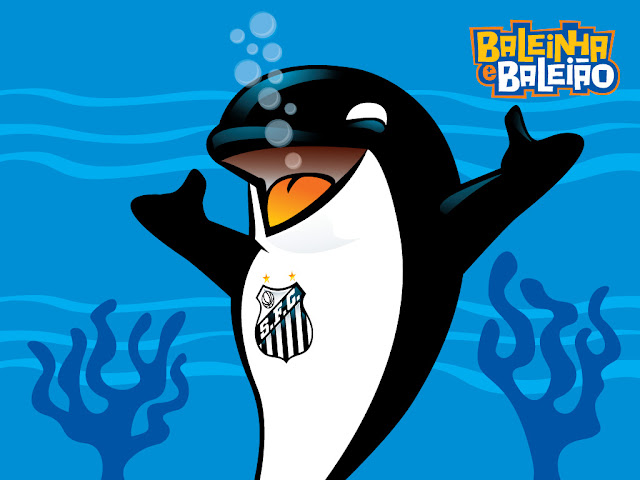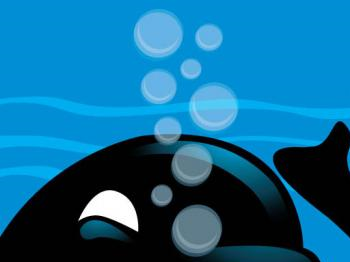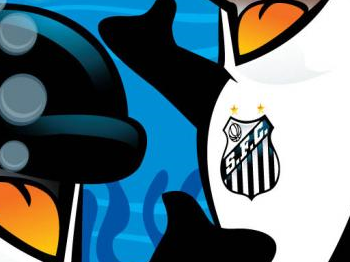The
GdiPlusX library is intended to be compatible with the .net framework’s system.drawing namespace. that means that you can use the msdn online documentation for the “system.drawing” in order to obtain accurate information about the gdiplusx classes. objects and functions. more than that, you can also convert the huge amount of samples published in various forums, blogs, articles and e-magazines to be used in VFP. It really does not matter if the sample was published in VB, C or ASP. the conversion to VFP is really intuitive.
When
GdiplusX was coded, we used a .net conversion tool, called reflector, which showed us all the source codes involved in each function, bringing us the possibility to code calling the same api functions, working with the same parameters.
But, during the coding phase, we had some great discussions about things that could be enhanced in order to ease user’s lives. We had a premise not changing the behavior of any function, even if we disagreed with some things there, in order to keep the full compatibility. On the other hand, we have decided that we could add new functions
Below is a short list of some functions that have been added to gdiplusx, that are not present in the .NET original classes. most of them have already been used in some samples posted in this blog, but till now, no documentation was published. so, here are some of those new functions, that came to my mind. probably bo or craig will remember to add something here. i hope to be updating this post with some other improvements that only VFP users have available.
Of course, we know that GdiPlusX still needs some documentation, and we’re working on it. But for now, we hope that the list below will bring you some help.
XfcGraphics class
DrawStringJustified Draws the specified text string at the specified location with the specified brush and font objects in a full justified format.
Parameters: tcstring, ; tofont as xfcfont, ; tobrush as xfcbrush, ; torectangle as xfcrectangle
Where: tcstring: text to be drawn tofont: gdi+x font object tobrush: gdi+x brush object torectangle: gdi+x rectangle object with position and dimensions to draw
Returns: nothing
Samples: fulljustified.scx / fulljustify.prg
Code sample:
local lctext
text to lctext noshow
this library was intended to provide visual foxpro 9.0 developers with an object based library to wrap the 600+ functions included with the gdi+ api. the intent is to mimic the system.drawing namespace in the .net framework. all classes in the library are based on the classes included in the system.drawing namespace and other classes that are dependencies for classes in the system.drawing namespace. some additional additional functionality has been added to take advantage of features built in to vfp 9.0 endtext
do locfile("system.app")
with _screen.system.drawing
local logfx as xfcgraphics
logfx = .graphics.fromhwnd(_screen.hwnd)
logfx.drawstringjustified(lctext, .font.new(“tahoma”,12);
, .brushes.red, .rectangle.new(0,0,250,400))
endwith
XfcBitmap class
ToClipboard Sends the current bitmap to the clipboard
Parameters: none
Returns: nothing
Code sample:
do locfile("system.app")
with _screen.system.drawing
local lobmp as xfcbitmap
lobmp = .bitmap.fromfile(getpict())
lobmp.toclipboard() endwith
FromClipboard Creates a gdi+ bitmap object from the clipboard data
Parameters: none
Returns: gdi+ bitmap object
Code sample:
do locfile("system.app")
with _screen.system.drawing
local lobmp as xfcbitmap
lobmp = .bitmap.fromclipboard()
lobmp.save("c:\fromclip.png", .imaging.imageformat.png)
endwith
FromVarbinary Creates an image object from the specified varbinary string. useful to start manipulating an image directly without having to convert the binaries from the image to a file.
Parameters: tcbinary
Returns: gdiplusx bitmap object
Code sample:
do locfile("system.app")
with _screen.system.drawing
local lcbinary
lcbinary = filetostr(getpict())
local lobmp as xfcbitmap
lobmp = .bitmap.fromvarbinary(lcbinary)
lobmp.save("c:\fromvarbinary.png", .imaging.imageformat.png) endwith
FromScreen
Captures the specified window or object image to a new gdi+ bitmap object
Parameters:
thwnd, tix, tiy, tiwidth, tiheight, tlensurevisible toform [, tix, tiy, tiwidth, tiheight [, tlensurevisible]] tocontrol [, tlensurevisible]
Returns: gdi+ bitmap object
Code sample:
do locfile
("system.app")
with _screen.system.drawing
local lobmp as xfcbitmap
lobmp = .bitmap.fromscreen()
lobmp.save("c:\fromscreen.png", .imaging.imageformat.png)
endwith
GetMonoChrome Returns a monochrome gdi+ bitmap (1bpp) of this image object.
The image must be saved in the bmp image format in order to keep the 1bpp format. because the resulting bitmap is in an indexed pixel format, gdi+ cannot create a xfcgraphics object in order to draw on it. this function is recommended to be used immediately before saving to a file, in order to obtain the minimum file size. for some specific tiff compression types, a monochrome image of 1bpp is required too, see more details in these articles:
Parameters: none
Returns: gdi+ bitmap object
Code sample:
do locfile("system.app")
with _screen.system.drawing
local lobmp as xfcbitmap
lobmp = .bitmap.fromfile(getpict())
local lomonoch as xfcbitmap
lomonoch = lobmp.getmonochrome()
lomonoch.save("c:\monoch.bmp", .imaging.imageformat.bmp) endwith
GetPictureVal Returns a string containing the pictureval of this image object, according to the imageformat passed. you can retrieve the binaries of the image with no disk access, in any image format supported by gdi+
Parameters: imageformat object
encoderparameter object (optional)
Returns: string
Code sample:
do locfile("system.app") local lobmp as xfcbitmap * obtaining the pictureval directly
with _screen.system.drawing lobmp = .bitmap.fromfile(getpict()) thisform.image1.pictureval = lobmp.getpictureval (.imaging.imageformat.bmp) endwith
GetPicturevalFromHBitmap Returns a string containing the pictureval of this image object using the hbitmap gdi technique. the binaries retrieved are always in bmp format, what makes it a big string in most times. but, in most cases, this technique runs about 40% faster than using getpictureval() function shown above. the imagecanvas objects uses this function to obtain the binaries from the images drawn.
Parameters: none
Returns: string
do locfile("system.app") local lobmp as xfcbitmap * obtaining the pictureval directly
with _screen.system.drawing
lobmp = .bitmap.fromfile(getpict()) thisform.image1.pictureval = lobmp.getpicturevalfromhbitmap() endwith
ApplyColorMatrix Applies the received color matrix to the current bitmap object. This is very useful, and provides an easy and quick way to apply image transformations in just one step, without having to use the imageattributes class.
Parameters: tocolormatrix
Returns: null
Code sample:
do locfile("system.app") with _screen.system.drawing local lobmp as xfcbitmap
lobmp = .bitmap.fromfile(getpict()) local loclrmatrix as xfccolormatrix
loclrmatrix = .imaging.colormatrix.new(;
0.33, 0.33, 0.33, 0, 0, ;
0.33, 0.33, 0.33, 0, 0, ;
0.33, 0.33, 0.33, 0, 0, ;
0, 0, 0, 1, 0, ;
0, 0, 0, 0, 1) lobmp.applycolormatrix(loclrmatrix)
lobmp.save("c:\clrmatrix.png", .imaging.imageformat.png) endwith
GetMask Returns a bitmap object with the mask from the current bitmap. In fact this function returns a bitmap with all the transparent parts of the image. useful when you need to convert a png image that contains transparencies to be used in the bmp image format.
Parameters: none
Returns: gdi+ bitmap object
ToPrinter Sends the image object to the printer
Parameters: tnstretch, tcprintername, tnorientation, tnalignment
tnstretch * specifies how an image is sized to fit inside a control. * 0 - clip. the image is clipped to fit the page. (default) * 1 - isometric. the image resizes to fit the page while maintaining its original proportions. * 2 - stretch. the image resizes to fit the page, but does not maintain its original proportions.
tcprintername * specifies the name of the printer, the same of getprinter()
tnorientation: * 0 - portrait * 1 - landscape
tnalignment * specifies a numerical value representing the alignment of the image in the page. * 0 - vertically centered left. * 1 - vertically centered right. * 2 - centered. centers image vertically and horizontally. * 4 - top left. aligns image in top left corner of the page. * 5 - top right. aligns image in top right corner of the page. * 6 - top center. aligns image at the top and horizontally centered on the page. * 7 - bottom left. aligns image in the bottom left corner of the page. * 8 - bottom right. aligns image in bottom right corner of the page. * 9 - bottom center. aligns image at the bottom and vertically centered on the page.
Returns: nothing
Code sample:
do locfile("system.app") with _screen.system.drawing
local lobmp as xfcbitmap
lobmp = .bitmap.fromfile(getpict())
lobmp.toprinter() endwith
FloodFill
Fills an area of the current bitmap surface with the passed color. It is used to fill an area with a single specific color, starting from the determined coordinates.
Parameters: tnX, tnY, toxfcColor
Returns: nothing
do locfile("System.app") local lobmp as xfcbitmap * obtaining the pictureval directly
with _screen.system.drawing
loBmp = .bitmap.fromfile(GETPICT()) loBmp.FloodFill(10,100, .Color.Red)
endwith
XfcColorMatrix class
MatrixMultiply Returns a new color matrix object resulting of the multiplication of two color matrices. this is very useful when more than one color matrix is needed to be applied to an image. multiplying the color matrices before they are applied to the image will bring a huge gain of performance.
Parameters: tocolormatrixone, ; tocolormatrixtwo
Returns: a new color matrix containing the resultant matrix
Code sample:
do locfile
("system.app") with _screen.system.drawing local lobmp as xfcbitmap
lobmp = .bitmap.fromfile(getpict()) local loclrmatrix1 as xfccolormatrix && greyscale matrix
loclrmatrix1 = .imaging.colormatrix.new(;
0.33, 0.33, 0.33, 0, 0, ;
0.33, 0.33, 0.33, 0, 0, ;
0.33, 0.33, 0.33, 0, 0, ;
0, 0, 0, 1, 0, ;
0, 0, 0, 0, 1) local loclrmatrix2 as xfccolormatrix && half brightness matrix
loclrmatrix2 = .imaging.colormatrix.new(;
0.5, 0, 0, 0, 0, ;
0, 0.5, 0, 0, 0, ;
0, 0, 0.5, 0, 0, ;
0, 0, 0, 1, 0, ;
0, 0, 0, 0, 1)
local lonewclrmatrix as xfccolormatrix
lonewclrmatrix = loclrmatrix1.multiply(loclrmatrix1, loclrmatrix2)
lobmp.applycolormatrix(lonewclrmatrix)
lobmp.save("c:\multclrmatrix.png", .imaging.imageformat.png)
endwith
XfcSize class
toRectangle Returns a xfcrectangle object from the current xfcsizef object
XfcSizeF class
toRectangleF Returns a xfcrectanglef object from the current xfcsizef object




